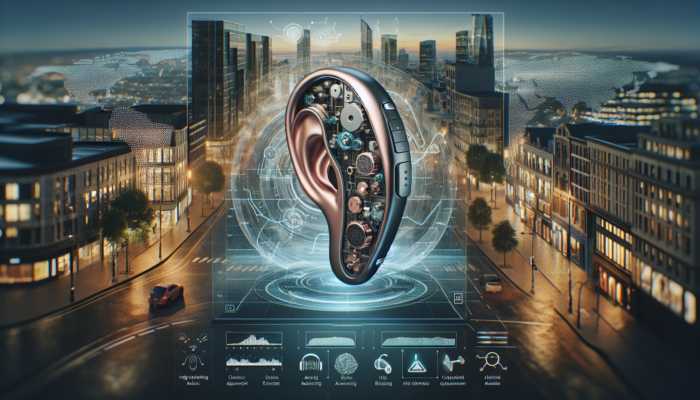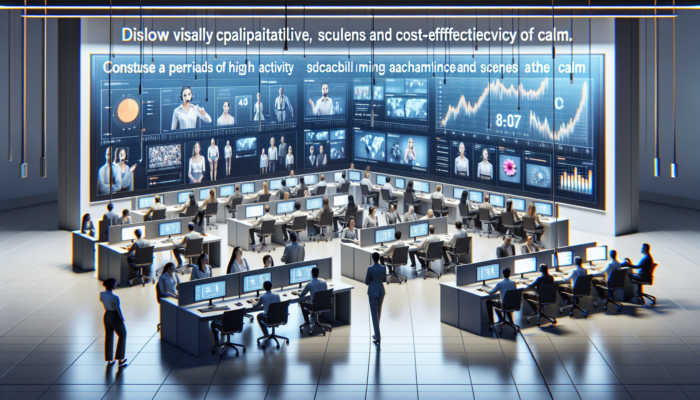Last Updated on 19/04/2025 by Admin
Uncovering the Root Causes of Presbycusis
Understanding the Role of Genetic Factors in Hearing Loss
Genetics significantly influences the development of presbycusis, or age-related hearing loss, as certain inherited traits can predispose individuals to this condition. Research has shown that distinct familial patterns of hearing impairment often arise, with specific genes directly impacting the functionality of auditory processes. For example, hereditary conditions like otosclerosis, characterized by abnormal bone growth in the middle ear, can hinder hearing abilities. Additionally, variations in genes that are crucial for cellular repair and maintenance may affect how quickly the auditory system degrades over time, leading to more pronounced hearing loss in susceptible individuals.
As we explore this topic further, the interplay between environmental factors and genetic predispositions becomes increasingly clear. Individuals with a family history of hearing loss must stay proactive about their auditory health. Regular hearing screenings are vital for early detection of changes, empowering individuals to take preventive actions, such as lifestyle adjustments, to reduce their risk. Furthermore, genetic counseling can be invaluable, offering insights into the likelihood of developing presbycusis and assisting individuals in making informed health decisions throughout the aging process.
The Impact of Environmental Noise on Hearing Health
Everyday sounds can have profound and lasting effects on hearing health, playing a significant role in the onset of presbycusis. Continued exposure to loud noises, whether from occupational environments like factories or recreational activities such as concerts and motorsports, can accelerate hearing loss. The cumulative impact of these sounds is damaging, particularly to the delicate hair cells in the inner ear, resulting in noise-induced hearing loss that compounds with the natural decline associated with aging.
Research indicates that even moderately loud environments, when experienced consistently over time, can contribute to the auditory decline observed in many older adults. For instance, individuals who have spent years in noisy workplaces may notice a significant deterioration in their hearing abilities as they approach retirement. To protect against this, it’s crucial for individuals to employ hearing protection in loud settings and adopt sound management strategies. This includes choosing quieter alternatives and minimizing prolonged exposure to high decibel levels, ultimately safeguarding their hearing as they age gracefully.
How Aging Affects Hearing Health
The natural aging process is intricately connected to shifts in auditory health, culminating in the experience of presbycusis. As people age, their auditory systems endure wear and tear, impacting the fragile structures within the ear responsible for sound detection. The cochlea, a spiral-shaped organ located in the inner ear, can suffer degeneration of both its hair cells and supporting cells, consequently reducing hearing sensitivity and overall auditory clarity.
Moreover, age-related modifications in the auditory nerve can hinder the processing of sounds, making it increasingly challenging to comprehend speech, particularly in noisy settings. This gradual decline often goes unnoticed until it significantly disrupts daily life. Therefore, aging is not merely a numerical value but a vital factor in understanding hearing health. Regular consultations with audiologists can help track any changes in hearing, offering opportunities for timely intervention and the development of effective management strategies for those affected.
Identifying the Symptoms of Presbycusis
Overcoming Difficulty in Understanding Speech
One of the prominent symptoms of presbycusis is the increased difficulty many individuals face when trying to understand speech, particularly in bustling or noisy environments. People may find themselves straining to keep up with conversations during social gatherings, which can lead to frustration and a tendency to withdraw socially. This symptom is especially pronounced in situations where background noise competes with spoken words, like restaurants or crowded public areas.
The cognitive effort required to decipher muffled sounds can lead to mental fatigue. This challenge transcends simple hearing difficulties; it involves a complex interaction between auditory processing and cognitive functions. As the auditory system becomes less efficient at filtering out surrounding noise, individuals may overlook crucial conversational cues, leading to misunderstandings or the frequent need to ask others to repeat themselves.
This symptom can profoundly affect social interactions and personal relationships, often resulting in feelings of isolation. Friends and family may express frustration, unaware of the challenges faced by those with presbycusis. To address this, individuals experiencing these difficulties should communicate openly with loved ones and explore strategies to improve communication, such as selecting quieter venues for discussions or utilizing assistive listening devices.
Understanding the Relationship Between Tinnitus and Hearing Loss
In conjunction with the struggle to hear clearly, many individuals with presbycusis also experience tinnitus, which is characterized by persistent ringing or buzzing in the ears. This condition can be quite distressing, adding another layer of complexity to the challenges associated with hearing loss. Tinnitus may manifest as a constant sound that varies in intensity, often becoming more pronounced in quiet environments.
The connection between presbycusis and tinnitus is multifaceted. As hearing diminishes, the brain might amplify certain frequencies, resulting in the perception of sounds that do not exist. This phenomenon can exacerbate feelings of frustration, compounding the difficulties experienced in social situations and daily life. It is advisable for individuals to consult healthcare professionals for effective strategies to manage tinnitus, which may include sound therapy, mindful relaxation techniques, or cognitive behavioral therapy.
Understanding the correlation between presbycusis and tinnitus is essential for effective management. Engaging in discussions with audiologists can provide individuals with comprehensive strategies to address both conditions, ultimately enhancing their overall quality of life and auditory health.
Recognizing the Need for Increased Volume
A frequent indicator of presbycusis is the noticeable need for elevated volume levels on televisions, radios, and other audio devices. Individuals may find themselves consistently adjusting settings to hear their favorite programs or conversations clearly. This requirement for amplification serves as a clear signal of declining auditory capabilities and can be an early warning sign of presbycusis.
The psychological implications of needing higher volume can lead to feelings of embarrassment and self-consciousness in social contexts. Friends or family members may not grasp the reasons behind the loud settings, potentially resulting in misunderstandings. It is crucial for those experiencing this symptom to recognize it as a natural aspect of the aging process and seek support from audiologists or hearing specialists.
Hearing aids have emerged as invaluable resources for individuals coping with volume control issues. These devices not only amplify sounds but can also be tailored for various environments, ensuring individuals can participate in conversations and enjoy media without discomfort. Raising awareness about the importance of addressing hearing loss openly can empower individuals to seek the assistance they need, ultimately enhancing their auditory experiences and overall quality of life.
Comprehensive Diagnosis of Presbycusis
Utilizing Hearing Tests for Accurate Diagnosis
The diagnostic process for presbycusis begins with thorough hearing tests, an essential step in understanding what is presbycusis and identifying who is affected. Audiologists employ a series of evaluations to gauge the extent of hearing loss, utilizing tools such as pure-tone audiometry. This test measures an individual’s capacity to hear sounds at various pitches and volumes, providing critical data regarding the severity of hearing impairment and aiding in the formulation of a personalized management plan.
In addition to pure-tone tests, speech audiometry is often conducted to assess how effectively individuals can comprehend spoken words. This evaluation sheds light on the practical implications of hearing loss in everyday situations. By analyzing the results from these assessments, audiologists can accurately diagnose presbycusis, distinguishing it from other types of hearing loss that may stem from medical conditions or environmental influences.
Timely and precise diagnosis is paramount. The sooner presbycusis is identified, the more effective the intervention strategies can be. Regular screenings, especially for those with risk factors or a family history of hearing loss, facilitate prompt action, enhancing the likelihood of successful outcomes in managing hearing health.
Importance of Reviewing Medical History
An essential aspect of diagnosing presbycusis entails a comprehensive review of the patient’s medical history. Audiologists inquire about previous conditions impacting hearing, exposure to loud sounds, and any medications taken that could affect auditory health. This detailed history provides insight into risk factors that may contribute to the progression of presbycusis.
During this review, information regarding family history of hearing loss can offer clues about genetic predispositions. Furthermore, chronic health conditions such as diabetes or hypertension, which can also influence hearing, are thoroughly considered. By piecing together this information, audiologists can develop a clearer understanding of the individual’s auditory health and customize the diagnostic approach accordingly.
This personalized methodology allows for a more nuanced comprehension of each patient’s situation, ensuring that all potential contributing factors are addressed. Individuals are encouraged to share openly about their hearing experiences and any related medical concerns, as this transparency will lead to a more accurate diagnosis and effective treatment strategies.
Conducting a Physical Examination of the Ear
A physical examination of the ear is a crucial step in ruling out other causes of hearing loss and confirming a diagnosis of presbycusis. During this examination, audiologists inspect the ear canal and eardrum for indications of wax buildup, infections, or structural abnormalities that may impact hearing. Identifying these issues allows healthcare providers to determine whether the hearing loss originates from factors other than age-related changes.
This examination typically includes tests for middle and inner ear functions, providing a comprehensive overview of auditory health. By synthesizing physical findings with results from hearing tests and medical histories, audiologists can confidently diagnose presbycusis and recommend appropriate interventions.
In certain situations, additional imaging studies may be necessary to explore underlying anatomical concerns. A thorough understanding of the full spectrum of auditory health is critical for developing a holistic treatment approach, ensuring individuals receive the care they require to maintain their hearing and overall quality of life.
Exploring Treatment Options for Presbycusis
The Benefits of Hearing Aids for Enhanced Communication
For many individuals facing the challenges of presbycusis, hearing aids emerge as a transformative solution. These devices amplify sounds, significantly enhancing communication and interaction with the world. Modern hearing aids are equipped with advanced technology, allowing for customization based on specific patterns of hearing loss and individual lifestyle preferences.
Users can take advantage of features such as directional microphones, which assist in focusing on sounds coming from a specific direction, making conversations in noisy settings more manageable. Furthermore, many hearing aids now offer Bluetooth connectivity, enabling seamless integration with smartphones and other audio devices. This technological advancement not only improves sound quality but also allows users to manage settings conveniently through dedicated applications.
It is vital for individuals to undergo professional fitting and adjustments to ensure optimal performance of their hearing aids. Regular follow-ups with audiologists can aid in fine-tuning devices to accommodate changing hearing needs over time. By embracing hearing aids, individuals can reclaim their auditory experiences, fostering connections with loved ones and engaging more fully in social activities.
Understanding Cochlear Implants as a Treatment Option
In more severe cases of presbycusis, cochlear implants may be recommended as a viable treatment alternative. Unlike hearing aids, which merely amplify sound, cochlear implants bypass damaged hair cells in the inner ear by directly stimulating the auditory nerve digitally. This innovative solution is particularly advantageous for individuals who derive minimal benefit from traditional hearing aids.
Candidates for cochlear implants typically undergo comprehensive evaluations to assess their suitability. These devices have the potential to change lives by restoring the ability to perceive sounds, enhancing communication abilities, and improving overall quality of life. Many patients report significant improvements in their capacity to engage in conversations, enjoy music, and appreciate environmental sounds, which may have been previously lost.
The process of receiving a cochlear implant encompasses both surgical and rehabilitation phases. Following implantation, recipients typically engage in auditory training to adapt to the new sounds they encounter. This adjustment phase is crucial, as the brain must learn to interpret the signals transmitted by the implant. With dedicated support and training, individuals can achieve remarkable progress in their hearing capabilities.
Enhancing Listening Skills Through Auditory Training
Auditory training programs are a vital complement to the management of presbycusis. These programs assist individuals in developing skills to better comprehend and process sounds, especially in complex listening scenarios. Through targeted exercises, participants learn to concentrate on specific sounds, thereby improving their ability to discern speech amidst background noise.
Such training often incorporates interactive elements, including listening exercises, speech discrimination tasks, and sound identification drills. Engaging in auditory training not only enhances listening abilities but also nurtures confidence in communication. Individuals can greatly benefit from structured programs, which may be available through audiologists, speech therapists, or community resources.
Incorporating auditory training into daily life can take various forms, such as listening to audiobooks, participating in group discussions, or using specialized applications designed to enhance auditory skills. By actively engaging in these practices, individuals with presbycusis can empower themselves to regain control over their auditory experiences, ultimately enriching their interactions and improving their overall quality of life.
Utilizing Assistive Listening Devices for Improved Sound Quality
Assistive listening devices (ALDs) are essential tools for enhancing sound for individuals dealing with presbycusis in specific environments. These devices, which include amplified telephones, television listening systems, and personal FM systems, can significantly improve sound quality in situations where traditional hearing aids may be insufficient.
For instance, individuals may struggle to hear conversations on the phone or while watching television due to background noise or distance from the audio source. ALDs address these challenges by amplifying sounds directly to the user, ensuring they can engage with media and conversations without straining their hearing. Many ALDs are designed to complement hearing aids, providing additional support for those experiencing hearing loss.
When considering ALDs, it’s crucial to identify the specific environments in which they will be utilized. Consulting with audiologists can help individuals select the most suitable options tailored to their lifestyles. By incorporating assistive listening devices, individuals can enhance their communication abilities, enabling more meaningful interactions and improving experiences in various social situations.
The Importance of Lip Reading and Speech Therapy
For individuals navigating the challenges of presbycusis, lip reading and speech therapy can serve as invaluable tools. Learning to read lips enhances communication by allowing individuals to depend on visual cues to supplement their auditory information. This skill can be particularly beneficial in scenarios where hearing aids or other devices may not suffice.
Speech therapy focuses on improving communication skills, teaching strategies to facilitate clearer interactions with others. Therapists may work with individuals on articulation, voice modulation, and effective communication techniques. This personalized approach empowers individuals to express themselves confidently, breaking down the barriers imposed by hearing loss.
Participating in group classes or workshops can also foster a sense of community, connecting individuals with shared experiences. Engaging with peers can provide encouragement, tips, and effective strategies for communication. As individuals develop their lip reading and speech skills, they can reclaim their voices, enriching their connections and enhancing their social lives.
Proactive Prevention Strategies for Presbycusis
Implementing Noise Protection Measures
Preventing presbycusis begins with awareness and proactive strategies against noise exposure. Utilizing ear protection in loud environments can significantly mitigate the risk of hearing loss. Whether attending concerts, working in manufacturing, or enjoying recreational activities, individuals should consider using earmuffs or earplugs specifically designed to attenuate harmful sound levels.
Employers also play a pivotal role in promoting noise protection initiatives by providing resources and training for workers in high-decibel environments. Implementing sound management practices, such as developing quieter workspaces and scheduling regular breaks from noise exposure, can contribute to overall auditory health.
Moreover, being mindful of personal listening habits—such as keeping volume levels moderate on headphones and audio devices—is essential for long-term hearing preservation. Raising awareness about the significance of noise protection empowers individuals to take charge of their auditory health, ultimately decreasing the impact of age-related hearing loss.
Adopting a Healthy Lifestyle for Better Hearing
Maintaining a healthy lifestyle is crucial for minimizing the risk of presbycusis. A balanced diet that is rich in essential vitamins and minerals supports overall health, including auditory function. Nutrients such as omega-3 fatty acids, vitamins A, C, and E, and magnesium have been associated with improved hearing health. Incorporating these nutrients into daily meals, such as leafy greens, fish, nuts, and fruits, can help counteract the effects of aging on hearing.
Regular physical activity also plays a vital role in maintaining healthy blood circulation, which is essential for the proper functioning of the auditory system. Engaging in aerobic exercises, strength training, and even yoga can promote cardiovascular health, thereby benefiting hearing capabilities.
Additionally, managing chronic conditions such as hypertension and diabetes is vital, as these health issues can have direct implications for hearing; they affect blood flow and nerve function. Routine check-ups with healthcare providers can ensure that individuals stay on top of their health, reducing the likelihood of developing presbycusis over time.
The Importance of Regular Hearing Check-ups
In the quest to understand presbycusis, regular hearing assessments are essential. Early detection of hearing loss allows for timely intervention, significantly improving quality of life. Audiologists recommend routine hearing check-ups, especially for individuals over the age of 50 or those with risk factors, such as a family history of hearing loss.
During these assessments, audiologists evaluate hearing capabilities through comprehensive tests, identifying any changes in auditory function. Regular check-ups provide individuals with a clearer understanding of their hearing health and encourage proactive measures to address any decline.
By establishing a pattern of regular hearing evaluations, individuals can stay informed about their auditory health and make educated decisions regarding lifestyle modifications or treatment options. This awareness fosters a proactive approach to hearing management, promoting an environment that prioritizes communication and social engagement.
Avoiding Ototoxic Medications to Protect Hearing
Certain medications, referred to as ototoxic drugs, can pose significant risks to hearing health, making it imperative to consider presbycusis. These medications, which include some antibiotics, chemotherapy agents, and non-steroidal anti-inflammatory drugs, can damage the auditory system, leading to hearing loss or tinnitus.
Consulting healthcare providers about the potential risks associated with prescribed medications is essential. Patients should inquire about alternatives that may not carry the same auditory risks, particularly if they have existing hearing concerns. Open communication with healthcare professionals empowers individuals to make informed choices about their treatment options, minimizing potential impacts on hearing.
Moreover, educating oneself about the signs of ototoxicity promotes early detection. Patients should remain vigilant about any alterations in hearing or balance during treatment, enabling timely intervention if necessary. By taking these steps, individuals can prioritize their auditory health while effectively managing other medical conditions.
Practicing Effective Sound Management Techniques
Sound management practices are crucial for protecting against the onset of presbycusis. Individuals should be aware of their exposure to loud sounds and learn to identify when volume levels are excessive. Implementing strategies such as taking breaks from prolonged noise exposure can help reduce the risk of auditory system damage.
In everyday life, creating quieter environments can also mitigate risks. For instance, engaging in noise-reducing activities such as reading, meditating, or pursuing hobbies that do not involve loud sounds can contribute to overall well-being. Encouraging friends and family to be mindful of their volume during conversations can create a supportive atmosphere for those experiencing hearing loss.
Advocating for sound management strategies in community settings—such as schools, workplaces, and public events—can raise awareness about the significance of protecting hearing. By fostering a culture that prioritizes auditory health, individuals can empower themselves and their communities to embrace proactive measures that enhance hearing health and overall well-being.
The Impact of Presbycusis on Quality of Life
Addressing Social Isolation Linked to Hearing Loss
The emotional ramifications of presbycusis often manifest as social isolation. Many individuals experiencing hearing loss may find themselves withdrawing from social situations due to the difficulties associated with communication. This withdrawal can lead to feelings of loneliness and depression, exacerbating the issue and creating a harmful cycle.
For example, individuals may avoid gatherings where conversations are lively and fast-paced, fearing they might misunderstand or be unable to participate meaningfully. This avoidance can result in diminished social interaction, adversely affecting friendships and family dynamics. It is crucial for those affected to recognize these patterns and seek support, whether through counseling or participating in community activities designed for individuals with hearing loss.
Additionally, fostering understanding among friends and family members can help create a supportive environment. Encouraging loved ones to practice patience and actively engage in conversations can alleviate some of the stress associated with hearing loss. By dismantling the barriers created by presbycusis, individuals can reclaim their social lives, ultimately enhancing their overall well-being.
Understanding the Emotional Well-being Affected by Hearing Loss
Struggling with presbycusis can profoundly impact emotional well-being. The frustration stemming from communication hurdles often leads to heightened anxiety and feelings of inadequacy. Individuals may feel embarrassed when they cannot hear or comprehend conversations, causing distress in social contexts.
These emotional challenges can further contribute to depression and diminished self-esteem, making it crucial for individuals to seek assistance when necessary. Engaging in support groups, therapy, or community resources can provide individuals with the tools needed to cope with the difficulties associated with hearing loss. Sharing experiences with others facing similar struggles fosters a sense of belonging and understanding.
In addition to seeking support, developing coping mechanisms can facilitate emotional health. Practicing mindfulness, exploring hobbies, or participating in physical activities can promote a positive mindset. By taking a holistic approach to emotional well-being, individuals can navigate the challenges posed by presbycusis more effectively, ultimately improving their quality of life.
Navigating Daily Activities with Hearing Loss
The effects of presbycusis extend into daily activities, significantly impacting individuals’ abilities to engage in routine tasks. Simple actions such as watching television, making phone calls, or participating in group conversations can become challenging due to hearing difficulties.
Individuals may frequently request others to repeat information or struggle to follow conversations, leading to frustration and exhaustion. These challenges can deter individuals from participating in enjoyable activities, highlighting the necessity of implementing strategies that facilitate engagement.
For instance, utilizing assistive devices like amplified telephones or TV listening systems can alleviate some of these challenges, allowing individuals to enjoy media and communicate effectively. Encouraging family and friends to participate in activities that promote open communication can also enhance daily experiences, ensuring that individuals with presbycusis feel included and valued.
Overcoming Communication Challenges Associated with Presbycusis
Navigating communication challenges is a significant aspect of presbycusis. Misunderstandings can frequently arise, leading to confusion and strained relationships. The effort needed to engage in conversations can be overwhelming, especially in noisy environments or settings where multiple people are speaking simultaneously.
To tackle these challenges, individuals are encouraged to implement effective communication strategies. This can include choosing quieter environments for discussions, facing the speaker to enhance lip reading, and speaking clearly without excessive background noise. Additionally, maintaining open dialogue with friends and family regarding hearing loss can foster greater understanding and patience.
Moreover, participating in auditory training can equip individuals with skills to navigate conversations more effectively. By emphasizing strategies that promote clearer communication, those with presbycusis can enhance their interactions, ultimately improving their relationships and overall quality of life.
Frequently Asked Questions About Presbycusis
What exactly is presbycusis?
Presbycusis refers to age-related hearing loss experienced by many older adults, characterized by a gradual decline in hearing ability, particularly in understanding speech and distinguishing sounds in noisy environments.
Who is most susceptible to presbycusis?
Individuals aged 50 and above are most susceptible to presbycusis, especially those with a family history of hearing loss, exposure to loud noise, or specific medical conditions that affect auditory health.
What are the primary causes of presbycusis?
The primary causes of presbycusis include genetic factors, exposure to environmental noise, and the natural aging process, all of which contribute to the gradual deterioration of hearing over time.
How is presbycusis diagnosed?
The diagnosis of presbycusis involves a series of hearing tests conducted by audiologists, a thorough review of medical history, and a physical examination of the ear to rule out other potential causes of hearing loss.
What treatment options are available for presbycusis?
Treatment options for presbycusis encompass hearing aids, cochlear implants, auditory training programs, assistive listening devices, and speech therapy, each tailored to meet the individual’s specific needs.
Can presbycusis be prevented?
While it may not be completely preventable, strategies such as protecting against noise exposure, maintaining a healthy lifestyle, and undergoing regular hearing assessments can reduce the risk of developing presbycusis.
What emotional impacts are associated with presbycusis?
Presbycusis can lead to emotional challenges, including feelings of social isolation, anxiety, and depression due to communication difficulties and the frustrations associated with hearing loss.
How can individuals manage communication challenges linked to presbycusis?
Individuals can manage communication challenges by utilizing assistive devices, selecting quieter environments for conversations, and engaging in auditory training to enhance their listening skills.
What role do assistive listening devices play in managing presbycusis?
Assistive listening devices improve sound clarity in specific environments, helping individuals with presbycusis to communicate more effectively and engage in daily activities without straining their hearing.
Is there a connection between tinnitus and presbycusis?
Yes, tinnitus frequently accompanies presbycusis, manifesting as ringing or buzzing in the ears, which can intensify the challenges of hearing loss and affect overall quality of life.
Explore our world on X!
The post Presbycusis: Understanding Age-Related Hearing Loss appeared first on The Microsuction Ear Wax Removal Network.





















